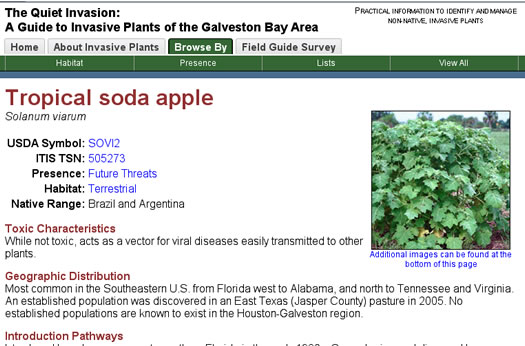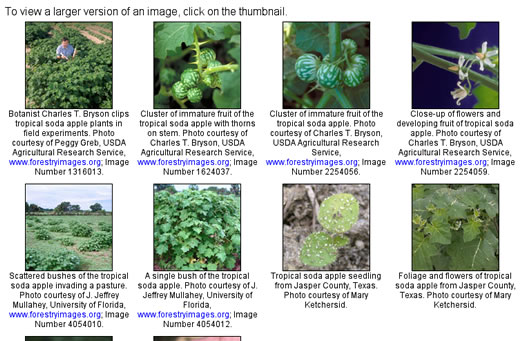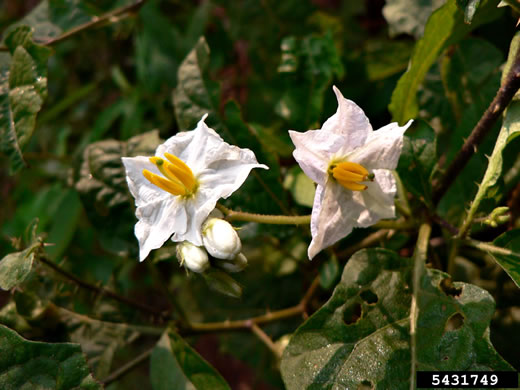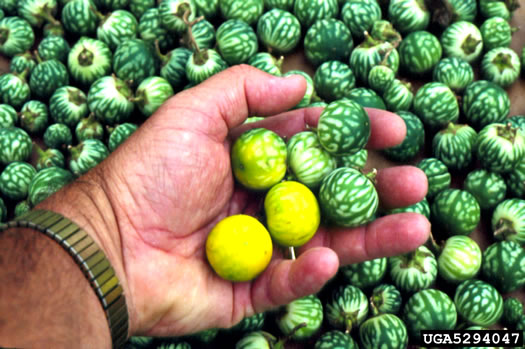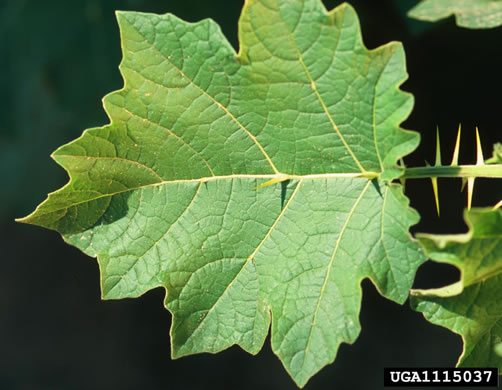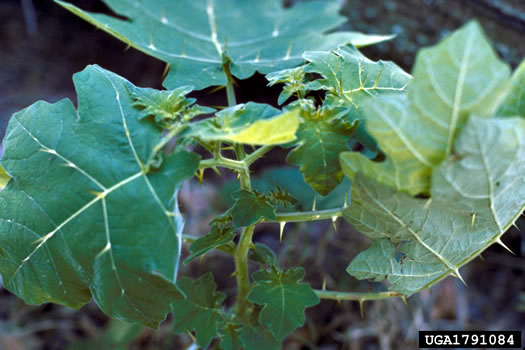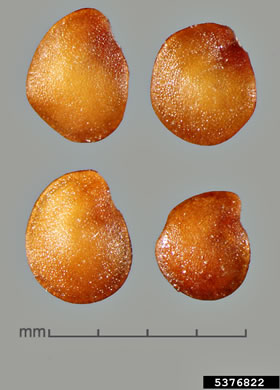Spermatophytes (seed plants): Angiosperms (flowering plants): Eudicots: Core Eudicots: Asterids: Lamiids: Solanales
WEAKLEY'S FLORA OF THE SOUTHEASTERN US (4/24/22):
Solanum viarum
FAMILY
Solanaceae
Go to FSUS key
Dig deeper at SERNEC, a consortium of southeastern herbaria.
Check out EDDMapS.org to see where this has been reported.
See more pictures at www.invasive.org.
Read more about Tropical Soda-apple at Vascular Plants of North Carolina.
SYNONYMOUS WITH
PLANTS NATIONAL DATABASE:
Solanum viarum
FAMILY
Solanaceae
SYNONYMOUS WITH Floristic Synthesis of North America. BONAP (Kartesz, 2021)
Solanum viarum
SYNONYMOUS WITH Guide to the Vascular Plants of Florida (Wunderlin & Hansen, 2011)
Solanum viarum
COMMON NAME:
Tropical Soda-apple
To see larger pictures, click or hover over the thumbnails.
Larry Trekell, Bugwood.org bug_5431749
May?
Petals first extended, then recurved. Yellow to white fused stamens project, per A Field Guide for the Identification of Invasive Plants in Southern Forests (Miller, Chambliss, & Lowenstein, 2010).
Florida Division of Plant Industry Archive, Bugwood.org bug_5294047
June?
Ripe berry yellow, immature berry green with white mottles, per Weakley's Flora (2012).
Charles T. Bryson, USDA Agricultural Research. Bugwood.org bug_1115037
Month Unknown
Leaves 6-8" long x 2-6" wide, hairy, with pointed lobes, per Invasive Plants, Guide to Identification, Impacts and Control (Kaufman & Kaufman, 2007).
G. Keith Douce, University of Georgia, Bugwood.org bug_1791084
Month Unknown
An upright, thorny, perennial subshrub or shrub, 1-2m in height, per A Field Guide for the Identification of Invasive Plants in Southern Forests (Miller, Chambliss, & Lowenstein, 2010).
Florida Division of Plant Industry Archive, Bugwood.org bug_5290022
Month Unknown FL
Leaf veins and stem covered with 0.5-1" long spines, per Invasive Plants, Guide to Identification, Impacts and Control (Kaufman & Kaufman, 2007).
Julia Scher, Federal Noxious Weeds Disseminules, USDA APHIS ITP, Bugwood.org bug_5376822
Month Unknown
Each berry produces 200-400 reddish-brown seeds, per A Field Guide for the Identification of Invasive Plants in Southern Forests (Miller, Chambliss, & Lowenstein, 2010).
Karan A. Rawlins, University of Georgia, Bugwood.org bug_5498789
Month Unknown
Lvs shallowly lobed (sinus typically <1/3 the distance from margin to midvein), per Weakley's Flora.
WEAKLEY'S FLORA OF THE SOUTHEASTERN US (4/24/22):
Solanum viarum
FAMILY
Solanaceae
SYNONYMOUS WITH
PLANTS NATIONAL DATABASE:
Solanum viarum
FAMILY
Solanaceae
SYNONYMOUS WITH
Floristic Synthesis of North America. BONAP (Kartesz, 2021)
Solanum viarum
SYNONYMOUS WITH
Guide to the Vascular Plants of Florida (Wunderlin & Hansen, 2011)
Solanum viarum
If a search such as "Carex leptalea var. leptalea" doesn't deliver the results you want, try "Carex leptalea".
Or, to minimize chances of a misspelling, try just "Carex le".
Less is more: If "pencil flower" doesn't deliver the results you want, try "pencil".

